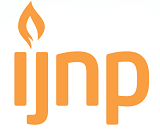EFEKTIFITAS NAFAS DALAM UNTUK MENINGKATKAN ARUS PUNCAK EKSPIRASI (APE) PADA PASIEN PENYAKIT PARU OBSTRUKTIF KRONIK (PPOK
DOI:
https://doi.org/10.18196/ijnp.v3i1.2219Abstract
Background: Global Initiative for Obstructive Lung chroniic Disesase (GOLD) estimated that Chronic Obstructive Pulmonary Disease (COPD) as the 6th leading cause of death in 1990 and would rise to the cause of the 3 in 2020 worldwide. COPD resulted in patients getting the respiratory system could be evidenced by a decrease in peak expiratory flow (APE), and caused respiratory function disorder so deep breathing exercises would help to boost the peak expiratory flow (PEF). Purpose: The research wanted to know affectivity of slow deep breathing exercised in increasing of peak expiratory flow in COPD patient.
Methods: The researched used quasi experiment with two group pre and post test design. The responden tof this research was 50 patients of COPD in Ciamis Hospital from April to May 2015 which was gotten by simple randomization. The writer used primary data was taked from measured of peak expiratory flow at slow deep breathing groups.
Results: The statistical analysis used paired t test and independent t test. Paired t test with α 95% finding indicated that slow deep breathing were effective to increasing of peak expiratory flow (p value 0,000<0,05), and the analysis mean of two groups by independent t test with α 95% finding indicate that slow deep breathing as not effective to increase peak expiratory flow of COPD bronchiale patient (p value 0,371>0,05.). Conclusion: this research was stated that slow deep breathing exercised was important in rehabilitation of COPD patient to increase peak expiratory flow, but intervention group was not better than control group.
Keywords: COPD, Slow Deep Breathing, Peak Expiratory flow (PEF).
References
Iglesia, Fernando & et al. (2004). Peak Expiratoiy Flow Rate as Predictor of Inpatient Death in Patients with Chronic Obstructive Pulmonary Disease. Southern Medical Journal. 9:266-277 diakses tanggal 20 Maret
dari http.//www.ncbi.nlm.gov/pmc Kementerian Kesehatan Republik Indonesia. (2008). Keputusan Menteri Kesehatan Republik Indonesia Nomor 1022/menkes/ sk/xi/2008 Tentang Pedoman Pengendalian Penyakit Paru Obstruktif Kronik Menteri Kesehatan Republik Indonesia. Jakarta
Maranata, Daniel,. (2010). Buku Ajar Ilmu Penyakit Paru 2010. Surabaya: Departemen Ilmu Penyakit Paru FK Unair-RSUD Dr. Soetomo
Muttaqin, A. (2008). Buku Ajar Asuhan Keperawatan Klien dengan Gangguan Sistem Pernafasan. Jakarta: Salemba Medika
Natalia, Dewi. (2007) Ektifitas Pursed Lips Breathing Dan Tiup Balon Dalam Peningkatan Arus Puncak Ekspirasi (APE) Pasien Asma Bronchiale Di Rsud Banyumas. Jurnal Ilmiah Kesehatan Keperawatan. 3 :52-58 diakses tanggal 24 Juli 2014 dari http//www.unsoed.ac.id
Perry, A, G & Potter, P, A.,(2005). Buku Ajar Fundamental Keperawatan Konsep, Proses dan Praktik. Jakarta: ECG
Persatuan Dokter Paru Indonesia.(2003). Buku Pedoman PPOK. Perhimpunan Dokter Paru Indonesia. Jakarta
Santosa, Slamet (2004). Perbandingan Nilai Arus Puncak Ekspirasi Antara Perokok dan Bukan Perokok. Artikel Ilmiah, Bagian Penyakit Dalam, Fakultas Kedokteran, Universitas Maranatha, Indonesia
Sastroasmoro S. (2008). Dasar-dasar metodologi penelitian klinis. Jakarta: Binarupa Aksara.
Sepdianto, T, C. (2008). Pengaruh Latihan Slow Deep Breathing Terhadap Penurunan Tekanan Darah pada Pasien Hipertensi di Kota Blitar. Tesis, Program Pasca Sarjana, Fakultas Kedokteran, Universitas Indonesia, Indonesia.
Smeltzer, S, C., & Bare, B, G. (2002). Buku Ajar Keperawatan Medikal Bedah Brunner & Suddarth. Jakarta: EGC.
Downloads
Issue
Section
License
License
Articles published in the IJNP (Indonesian Journal of Nursing Practices) are licensed under a Attribution 4.0 International (CC BY 4.0) license. You are free to:
- Share — copy and redistribute the material in any medium or format.
- Adapt — remix, transform, and build upon the material for any purpose, even commercially.
This license is acceptable for Free Cultural Works. The licensor cannot revoke these freedoms as long as you follow the license terms. Under the following terms:
Attribution — You must give appropriate credit, provide a link to the license, and indicate if changes were made. You may do so in any reasonable manner, but not in any way that suggests the licensor endorses you or your use.
- No additional restrictions — You may not apply legal terms or technological measures that legally restrict others from doing anything the license permits.
Copyright
Authors who publish with IJNP (Indonesian Journal of Nursing Practices) agree to the following terms:
- Authors retain copyright and grant IJNP (Indonesian Journal of Nursing Practices) the right of first publication with the work simultaneously licensed under an Attribution 4.0 International (CC BY 4.0) that allows others to remix, adapt and build upon the work with an acknowledgment of the work's authorship and of the initial publication in IJNP (Indonesian Journal of Nursing Practices).
- Authors are permitted to copy and redistribute the journal's published version of the work (e.g., post it to an institutional repository or publish it in a book), with an acknowledgment of its initial publication in IJNP (Indonesian Journal of Nursing Practices).














